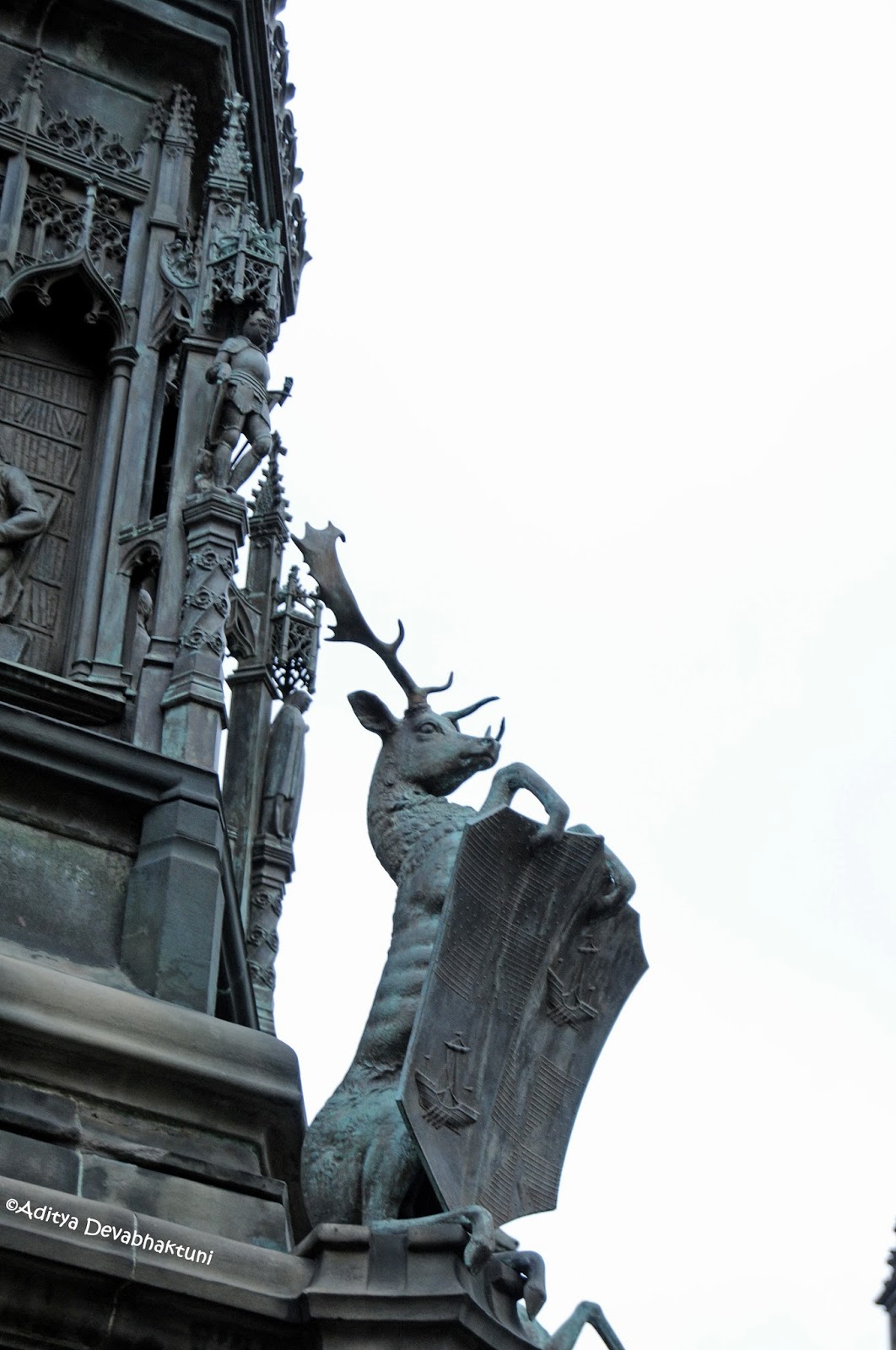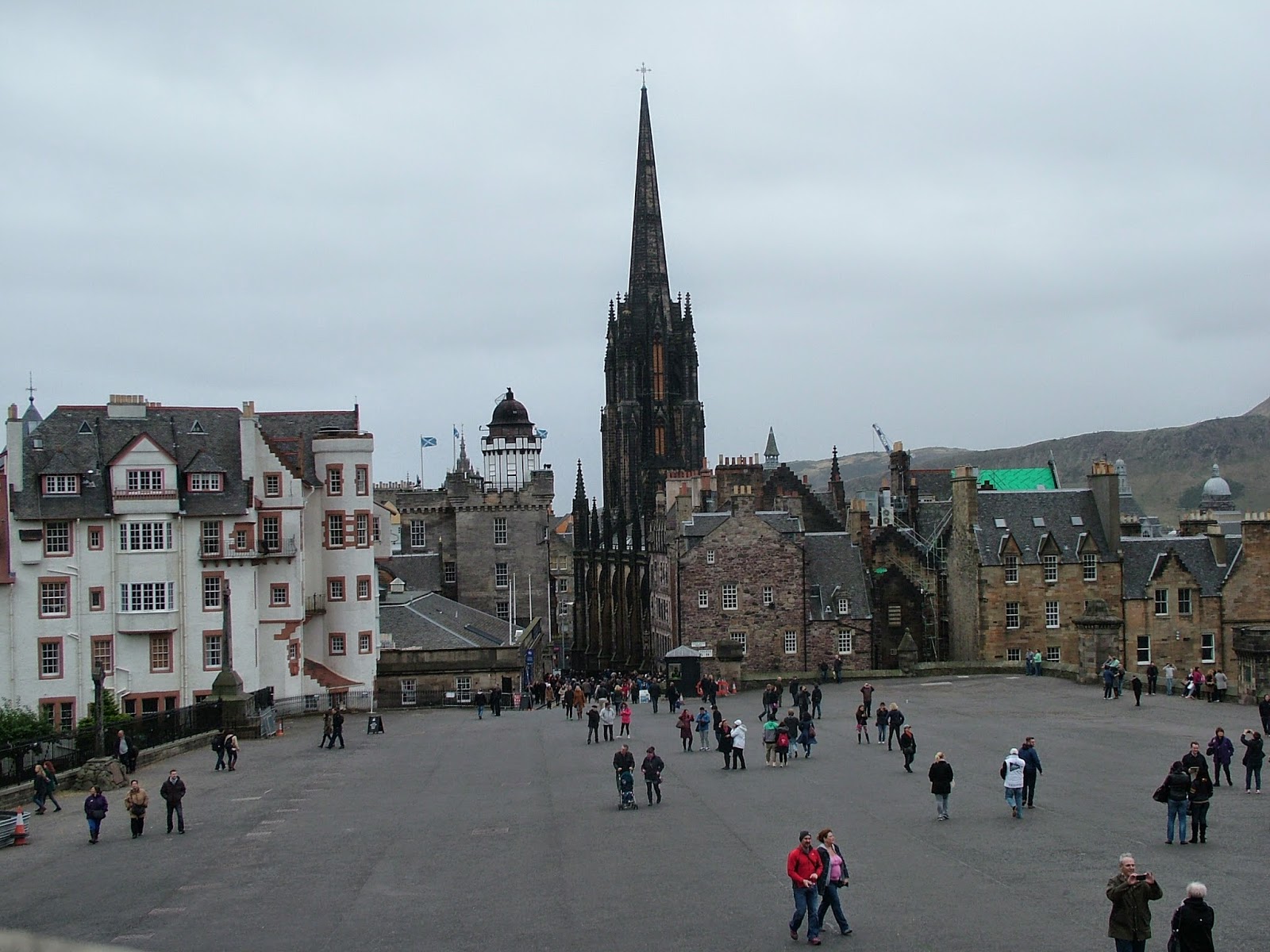
CHAPPIDI ABHIRATH REDDY,
C/O COL GKS REDDY,
Visit Edinburgh (Contd)
Edinburgh (Listeni/ˈɛdɪnbərə/; Scottish Gaelic: Dùn Èideann) is the capital city of Scotland, situated in Lothian on the southern shore of the Firth of Forth. It is the second most populous city in Scotland and the seventh most populous in the United Kingdom. The population in 2012 was 482,640.
Edinburgh has been recognised as the capital of Scotland since at least the 15th century, but political power moved south to London after the Union of the Crowns in 1603 and the Union of Parliaments in 1707. After nearly three centuries of unitary government, a measure of self-government returned in the shape of the devolved Scottish Parliament, which officially opened in Edinburgh in 1999. The city is also home to many national institutions such as the National Museum of Scotland, the National Library of Scotland and the Scottish National Gallery. Edinburgh's relatively buoyant economy, traditionally centred on banking and insurance but now encompassing a wide range of businesses, makes it the biggest financial centre in the UK after London. Many Scottish companies have established their head offices in the city.
Visit Edinburgh Castle
Edinburgh Castle is a historic fortress which dominates the skyline of the city of Edinburgh, Scotland from its position on the Castle Rock. Archaeologists have established human occupation of the rock since at least the Iron Age (2nd century AD), although the nature of the early settlement is unclear. There has been a royal castle on the rock since at least the reign of David I in the 12th century, and the site continued to be a royal residence until the Union of the Crowns in 1603.
From the 15th century the castle's residential role declined, and by the 17th century it was principally used as military barracks with a large garrison. Its importance as a part of Scotland's national heritage was recognised increasingly from the early 19th century onwards, and various restoration programmes have been carried out over the past century and a half. As one of the most important strongholds in the Kingdom of Scotland, Edinburgh Castle was involved in many historical conflicts from the Wars of Scottish Independence in the 14th century to the Jacobite Rising of 1745. It has been besieged, both successfully and unsuccessfully, on several occasions.
North Side Stairs to Clim on to the Castle Rock
A view of Edinburgh Palace from the Castle Esplanade
(The Front Courtyard on the Rock)
Another view of the Castle from the Esplanade
A closer view of the Castle from the Esplanade
A close up of the Castle from the Esplanade
Statue of Fd Marsl Fredirick (Duke of York and Albany)
The Prince Frederick, Duke of York and Albany (Frederick Augustus; 16 August 1763 – 5 January 1827), was the second eldest child and second son of King George III of the United Kingdom and a member of the House of Hanover. From the death of his father in 1820 until his own death in 1827, he was the heir presumptive to his elder brother, King George IV, both to the United Kingdom and the Kingdom of Hanover.
Frederick was thrust into the British army at a very early age, appointed to high command at the age of 30, and commanded in a notoriously ineffectual campaign during the War of the First Coalition, which followed the French Revolution. Later, as Commander-in-Chief during the Napoleonic Wars, he reorganised the British army, putting in place vital administrative and structural reforms.
Statue of Fd Marsl Fredirick, on the Esplanade
A close up of the Statue
Another view of the Statue
Views of Edinburgh City Landscape from the Esplanade
View of City Landscape to the west of the Esplanade
Another view of the City Landscape to the West of Esplanade
City Landscape to the North of Esplanade
Another view of the Nothern City Landscape from the Esplanade
A view of the city Landscape to the South of Esplanade
A Modern Building, which has come up on the Castle Rock,
at the SW Corner of the Esplanade
Memorial to Gordon Highlanders Regiment
The Memorial to Gordon Highlanders could be found on Edinburgh Castle Esplanade and commemorates those men of the Regiment, who died in the South African War (Boer War) 1899 – 1902. The Memorial was unveiled on 06 Jul 1905.
A side view of the Gordon Highlanders Regiment
Another Side view of the Gordon Highlanders Memorial
A front view of the Gordon Highlanders Memorial
Close views of the Castle
A close up of the Castle, with the Main Entrance and the Draw Bridge on the Right
Ancient Lamps on either side of the Draw Bridge and
Sculptures on either side of the Main Entry Gate
A close up of One of the Sculptures astride the Main Entry Gate
A view of the Moat, out side the Outer Fort Wall
A close up of the NW Corner of the outer Fort Wall
A close view of the Outer and the Inner Fort Wall from the NW Corner
A view of the Draw Bridge and the Main Entrance
A close up of the Castle, taken from just outside the Main Entry Gate
A view of the Draw Bridge and the City Land Scape from the Main Entrance
The Main Entrance through the outer Fort wall, taken from the Inner Courtyard
The Castle Layout Map displayed in the Inner Courtyard
A view of Inner Entry Gate to the Palace, from the Inner Courtyard
Another view of the Inner Entry Gate to the Castle
A close up of the Inner Entry Gate to the Castle
A cannon in the Inner Fort Wall, Guarding the Outer Entry Gate
A close up of the Inner Fort Wall
A view of the City Landscape from the Ramparts of the Outer Fort Wall
A close up of the Inner Fort Wall
The Hub (Festival Centre) - Edinburgh
The Hub, at the top of Edinburgh's Royal Mile, is the home of the Edinburgh International Festival, and a central source of information on all the Edinburgh Festivals. Its gothic spire - the highest point in central Edinburgh - towers over the surrounding buildings below the castle. The building design was the result of a collaboration between Edinburgh architect J Gillespie Graham and the famous gothic revivalist Augustus Pugin. It was constructed between 1842 and 1845.
The inside houses the Hub Cafe; Hub Tickets, the central box office for the International Festival, which also sells tickets for a wide range of other events; a Main Hall with a capacity of 420, used as a venue for concerts and so on; and two smaller venues, the Glass Room and the Dunard Library, suitable for smaller events.
A view of the Hub Tower from the Esplanade
A close up of the Hub Tower
The Base of the Hub, upto the Clock
Another close up of the Hub Tower
Greyfriars Bobby
Greyfriars Bobby was a Skye Terrier who became known in 19th-century Edinburgh for supposedly spending 14 years guarding the grave of his owner until he died himself on 14 January 1872. The story continues to be well known as active oral history in Edinburgh, through several books and films, and became a prominent commemorative statue and nearby graves act as a tourist attraction.
The best-known version of the story is that Bobby belonged to John Gray, who worked for the Edinburgh City Police as a night watchman. When John Gray died he was buried in Greyfriars Kirkyard, the graveyard surrounding Greyfriars Kirk in the Old Town of Edinburgh. Bobby then became known locally, spending the rest of his life sitting on his master's grave.
In 1867 Lord Provost of Edinburgh, Sir William Chambers—who was also a director of the Scottish Society for the Prevention of Cruelty to Animals—paid for Bobby's licence, and gave the dog a collar now in the Museum of Edinburgh.
Bobby is said to have sat by the grave for 14 years. He died in 1872 and was buried just inside the gate of Greyfriars Kirkyard, not far from John Gray's grave.
A year later, Lady Burdett-Coutts had a statue and fountain erected at the southern end of the George IV Bridge to commemorate him.
Statue of Greyfriars Bobby
A close up of the Statue
A close up of the Plaque, below the Statue
A write up Board next to the Statue of Greyfriars Bobby
Note:- The information about the places visited has been Extracted from Wikipedia The Free Encyclopedia.











































No comments:
Post a Comment